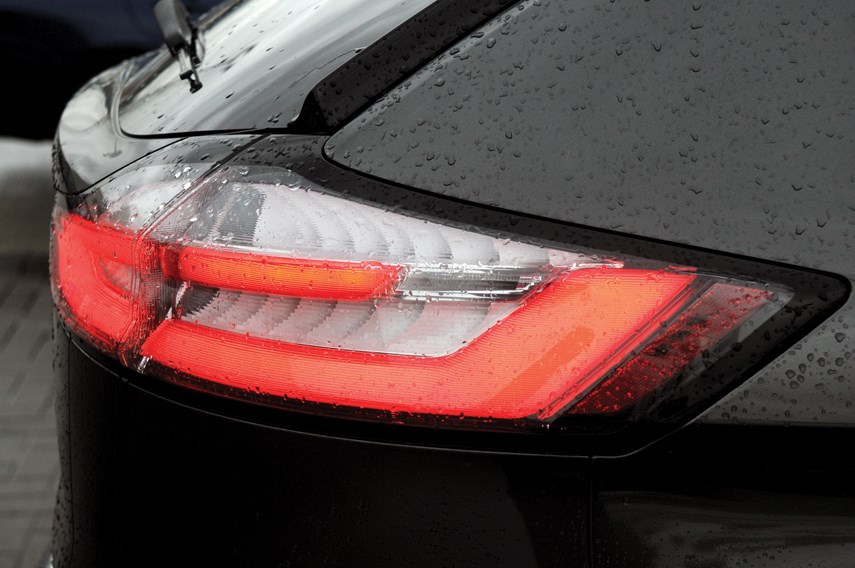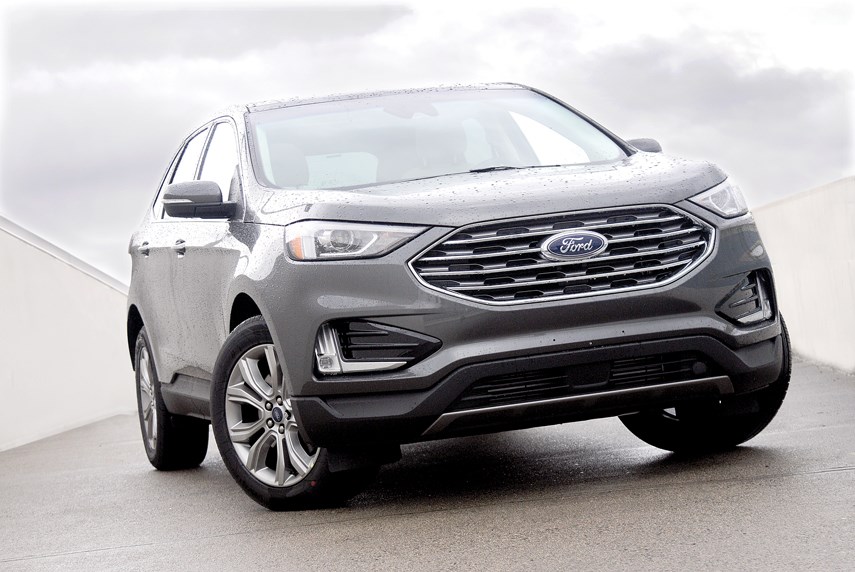Ford’s decision earlier this year to gradually phase out their car lines (apart from the Mustang) seemed to catch everyone off guard.
As unusual as the company’s move seems, they’re just moving with the times: crossovers are here to stay, and building them is what’s profitable in the long run.
Thus, the Edge essentially replaces the Taurus as what the standard bearer family vehicle is for the Ford motor company. Old Henry Ford never dreamed of this day when he started cranking out Model Ts via mass production. Or perhaps he did, as the Model T rides high enough to be considered a crossover, of a sort.
At any rate, the five-passenger Edge joins the Escape and Explorer as the backbone of the Ford fleet. It’s supposed to be the slightly cool one, large enough to haul the kids around to school and soccer practice, but with a bit more presence than the Escape, and a bit more style than the Explorer.
There’s even a sporty new ST version from Ford’s performance division. However, let’s take a look at the main-line version, and see if moving from cars to crossovers really does give Ford an edge.
Design
The first Edge was built largely around a broad-bladed grille that put the viewer directly in mind of the Gillette company. The new machine’s ovoid grille is a bit more piscine in looks, but still handsome.
It’s also not overwrought, particularly in a sea of big-grilled machines that posture just a bit too hard. Instead, the Edge isn’t quite as, er, edgy as its debut version, but is boxily useful looking, and capped off by standard LED lighting front and rear, and dual exhausts out back.

The one less-practical thing about vehicles like these replacing cars is that they always seem to need huge wheels to fill out those wheel wells. The Edge is no exception, with 18-inch wheels standard on the base model, 19-inch on the Titanium trim, and optional 21-inch wheels on the ST. The 18s aren’t quite so bad, but everything else will ding you in the pocketbook when it comes time for replacement or winter tires.
Environment
As with the exterior, the interior of this next-generation Edge seems a bit toned down compared to previous Ford flights of fancy. There’s plenty of smooth plastic surfaces, a minimum of chrome brightwork, and a very conventional-looking touchscreen for the infotainment.
The only thing Ford’s done here that’s a bit out of the ordinary is the rotary shift knob, which has the driver dialling up a gear with a twist, rather than a shift. Supposedly, this is a more compact solution than the standard shifter, but it’s not that much of a space savings, and can be a bit fiddly at first.

Other than that, there’s plenty of storage space up front for driver and passenger, a spacious rear row that’ll be large enough for a growing family, and a 1,111-litre sized trunk space with a large, square opening. If you’re looking for a practical way to haul people and things around, the Edge is it.
Performance
V-6 power used to be the hallmark of the Edge, and the main differentiating factor as to why you’d move up to one from an Escape (which is the stronger seller in the Canadian market). However, for 2019, Ford’s gone all four-cylinder in their range, with a powerful 2.7-litre turbocharged four-cylinder in the sporty ST model, and a boosted 2.0-litre in everything else.
In my tester’s Titanium trim, that 2.0-litre makes 250 horsepower at 5,500 r.p.m., and a hefty 280 foot-pounds of torque at 3,000 r.p.m. Note, however, that Ford quotes these figures with premium fuel, but the Edge’s engine is designed for the regular fuel that you’ll more likely run it on. With 87 octane, you’ll lose some horsepower, but keep most of that torque figure.
With a new eight-speed automatic transmission handling shifting duties, the Edge scoots quickly up to speed, making the most of that useful torque. Towing capacity with the four-cylinder is pretty solid too, at 1,580 kilograms.
As far as drive and handling goes, the Edge is not exactly a corner carer, but has a little more ability than some of its competition. The ST version has a totally reworked suspension if you’re looking for something sportier, but the standard car’s slightly numb steering can easily be overlooked, as the vehicle itself is quite comfortable without feeling bulbous.
The brakes perform very well, and the Edge corners well. The all-wheel-drive system shrugged off some very damp weather and standing water – it’s standard on everything except the SEL model, where it’s an option you should probably get.
Compared to the Escape, which definitely feels sportier than the Honda CR-V or Toyota RAV4, the Edge doesn’t quite have as much of a personality to the drive. However, it does offer a nice blend of comfort and competence, and is particularly relaxing to drive when the weather’s poor.
Ford offers a host of driver aids with the Edge, as is becoming more common in most mainstream cars. The blind-spot monitoring and emergency automatic braking are useful safety systems just in case, and the adaptive cruise with lane-keeping takes some of the drudgery out of the commute.
Features
For $34,499 to start, and $53,439 as-optioned for this week’s tester, the Edge covers a broad range of pricing and features. Skipping the $2,100 rear-seat entertainment package would be pretty easy in this age of iPads and phones. The $5,000 package that bundles everything from a panoramic sunroof to gotta-have-it heated steering wheel would be a hard box not to check.

Ford’s SYNC infotainment is vastly improved over its first efforts, although it should be noted that the Edge’s version was a little sluggish to get going on cold mornings. All the functionality you want is here, and the voice controls work well.
Fuel economy figures are 11.4 litres/100 kilometres in the city, and 8.3 l/100 km on the highway. With cold weather and a turbocharged engine, the Edge usually got close to 12 l/100 km over the week. Summertime should see more reasonable mixed-mileage.
Green light
Demure styling; useful space; very comfortable.
Stop sign
Not as exciting as the previous model; some cheap interior plastics.
The checkered flag
A practical and useful machine that the whole family will enjoy; not quite as edgy as before, but better.
Competition
Honda Passport ($TBD): The Pilot has been quite successful for Honda as a vehicle to move up into once you’ve outgrown the family CR-V. However, a lot of families don’t need that third row of seats, and just want a little more legroom for their teenagers. What to do?
Why, release a shortened version of the Pilot, and bring back the Passport badge. Formerly applied to a rebadged Isuzu product, this time the Passport is all Honda, and mostly just a Pilot with its tail docked.
Not quite on the roads yet (it was just revealed at the Los Angeles auto show), the Passport should be lighter on its feet than the Pilot, as well as better for the occasional off-road excursion. Since the Pilot is already surprisingly good to drive for a three-row crossover, things look promising.



